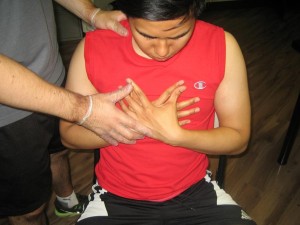Exercise-induced asthma is a form triggered by physical activity. Most individuals with chronic asthma have symptoms while exercising. Nevertheless, many without the chronic form end up with symptoms only when exerting.
One reason why exercise-induced asthma occurs is that during activity, an individual breathes via the mouth which is cold and dry air. The muscle bands surrounding the airways are highly sensitive to changes in temperature and humidity of the air being breathed in. The bands react by contracting which constricts the airway that triggers the symptoms of asthma.

Indications
- Wheezing
- Chest tightness
- Coughing
- Shortness of breath during physical activity
- Unusual feeling of fatigue during exercise
Other factors that can affect the symptoms with exercise include the presence of pollen and pollutants in the air and upper respiratory infections.
These symptoms generally start within 5-20 minutes after starting physical activity or 5-10 minutes after brief activity has stopped. If the individual experiences any of these symptoms during physical activity, a doctor should be informed.
Management of exercise-induced asthma
There are measures that can help regulate the indications and enable one to uphold normal physical activity.
The inhaled medications taken before physical activity can control and prevent the symptoms of exercise-induced asthma. The preferred medications are short-acting beta 2 agonist inhalers. These are used 15-20 minutes prior exercise to prevent the airways from constricting and control the condition for up to 4-6 hours. If the symptoms persist, the doctor might start to change to a longer-acting inhaler.
Aside from medications, a warm-up phase before activity and cool-down period after can prevent the condition. Physical activity must be limited during the peak pollen season or if the temperatures are tremendously low and the air pollution levels are elevated. In addition, having viral upper respiratory infections can also worsen the symptoms, thus it is vital to limit activity if one is present.
More Information / Disclaimer
The information posted on this page on exercise-induced asthma is for learning purposes only. Learn to recognize and manage this type of asthma by taking a standard first aid course with Toronto First Aid.
